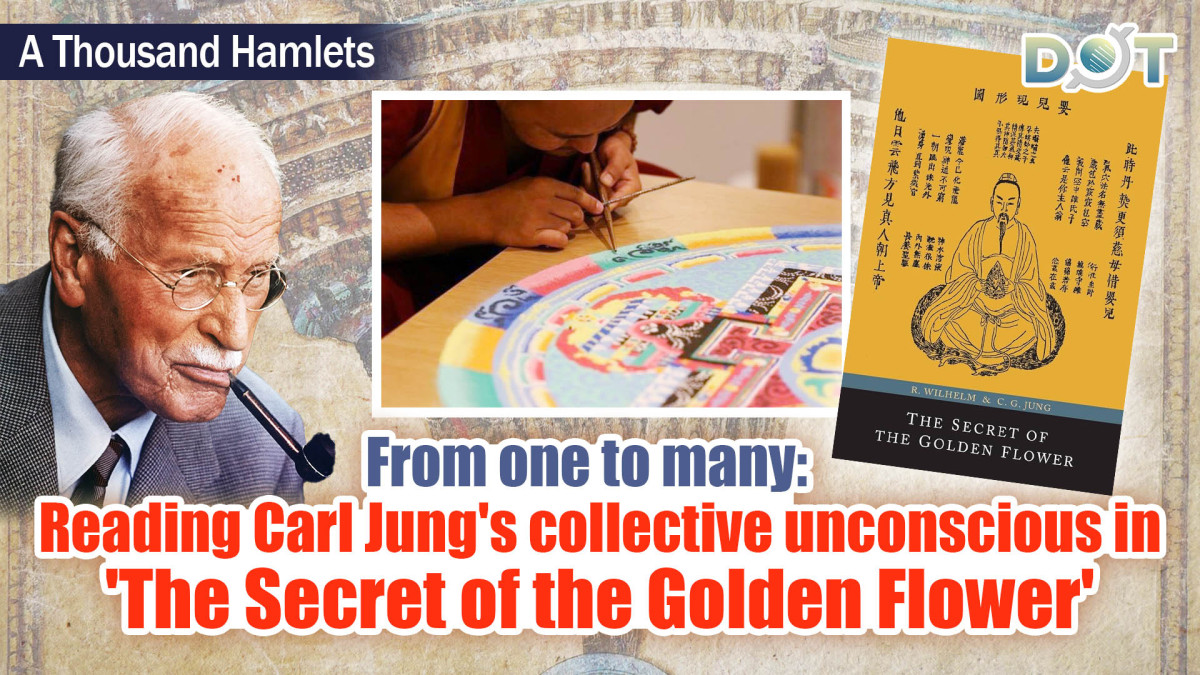
By Liu Yu
In the 1920s, German sinologist Richard Wilhelm sent the German translation of The Secret of the Golden Flower 太乙金華宗旨 to Carl Jung and asked him to write a commentary. This lengthy commentary is the origin of this book. At that time, Jung was in his darkest moment after breaking with Freud, and he began spontaneously drawing images that appeared in his heart and dreams; these images were often mandalas. After reading this Eastern cultural classic, Jung claimed that the ideas about the mandala and the tendency toward the center described in the text provided him with confirmation he had never even dreamed of, helping Jung resolve the difficulties he encountered in his research on the collective unconscious.
Mindfulness is a process of "conscious living." In Taoist terms, it is returning to the "essential self." In other words, mindfulness is a process of expressing the psyche on a higher level of consciousness. Early mindfulness involved reifying and personifying some spontaneously arising abstract structures. The mandala is precisely the symbolic pattern produced after this reification. The mandala is a symbol representing the universe in Hinduism and Buddhist Tantra. We can make a connection: the universe is an infinitely large concept, while what we practice in mindfulness meditation is "inner observation." This inward excavation is a microcosmic view. When mandalas are used in religious rituals, they are mostly used as a method of meditation. By mentally entering the mandala and continuously advancing towards its center, this process also symbolizes the decomposition and recombination of the universe.
Mandalas could appear historically anywhere: on paper, fur, bronze ware, and stone. The mindfulness we speak of now can be two processes: from one to many, or from many to one. Coincidentally, the mandala is not only a prominent element in Eastern religions; we can similarly find similarities in Christianity. Early medieval Christian mandalas often featured Christ at the center, with the evangelists or some elements of stars and the moon in the cosmos at the four cardinal points. This mode of expression is very ancient; the Egyptians also used this method to represent the pharaoh's ancestor Horus and his four sons.
Another characteristic of mindfulness practice is "cessation of breath." Simply put, it is the superficial slowing or stopping of breathing, as if an organ in the body, different from the normal state, has replaced the lungs and nose for breathing. We have found Entelechy in Aristotle's expression, and similarly, we can find in Saint Paul's words: find resemblance in Christ, but the realistic meaning produced by the phenomenon of the flesh. Actually, it is composed of the spirit and substance generated from within a person.
We cannot achieve mindfulness through conscious will, because in a conscious state, we will have biases. We get an explanation from the German sinologist and psychologist, Jung's concept of the collective unconscious. The individual needs to dialogue with their own inner unconscious through certain primitive metaphors and some symbolic patterns; this is a kind of primitive expression, an interaction with a premonition generated by their unconscious.
What people today call mindfulness is not just complete stillness and thinking, but a kind of intuition and symbol through which the human body internally expresses consciousness. Thereby, it integrates the existing consciousness with the distant past and future of life into the present moment.
In every author's heart, there exist countless character images. Some indeed read as not very familiar. This is actually a patchwork of real people from actual life. Before creation, the mediator will select and discard the elements that constitute the characters. Although there is subjective conjecture intended to guide the reader, more often it is just a concealed description of the actions of people around them. Oh, this may seem fanciful, but readers will always find inadvertent resonance within it.
Let me make an analogy: I am exceptionally amazed by those great works that contain stories within stories and meanings beyond words. I adore the endlessly recurring one thousand and one stories in The Arabian Nights, but that is only a "repeating decimal," still unable to perfectly interpret the object of my meditative contemplation. What I desire more is to endlessly create new things, just like the Evenki shaman gathering spiritual energy between heaven and earth, exhausting a whole life yet unable to explore the boundless object of meditation.
I have found a method that might make meditation perpetual.
If the person or object of meditation can actively create new people or things, then this might be success. The most initial meditation should only have one cycle, like Natsume Soseki's "Kushami 苦沙彌," in I Am a Cat, where this name contains the philosophical connotation of an ascetic monk, satirizing the protagonist's pursuit of the mediocrity of life and self-torture, giving birth to the fool "Kushami" and the "genius" Kushami. And so on and so forth. The genius and the madman reflect each other; regardless of whether the mad words have real meaning, as long as the author is more confident, they will inevitably gain more recognition from the mediocre—the more incomprehensible, the more profound and mysterious. At this time, the boundary between genius and fool becomes increasingly blurred. Similarly, reflection is something shared by all of us, infinitely expanding and then perpetual.
Liu Yu is the lead editor of the cultural commentary "A Thousand Hamlets." Liu holds a BA in English Literature from HKBU and an MA in History from HKU.
The views do not necessarily reflect those of DotDotNews.
Related Readings:
A Thousand Hamlets | Stumbling through texts: A pedant's dialogue into translation's joy
A Thousand Hamlets | The secret struggle: Zheng Zhenduo's cultural resistance in Anti-Japanese War




















Comment